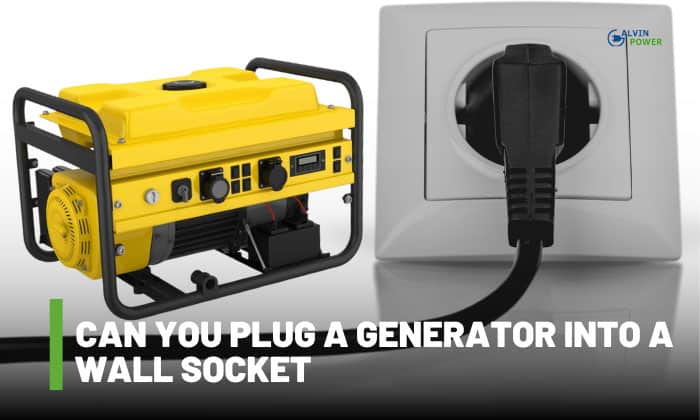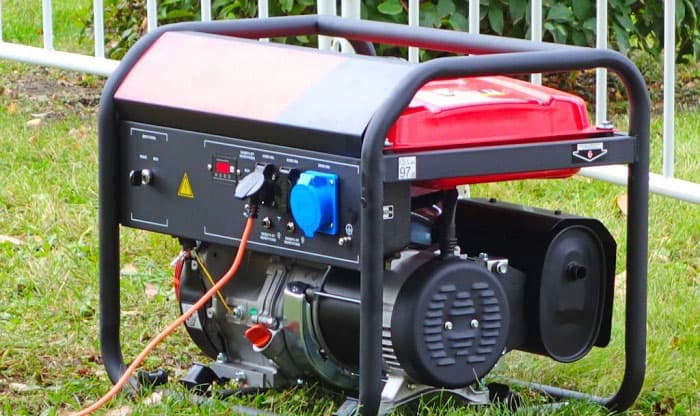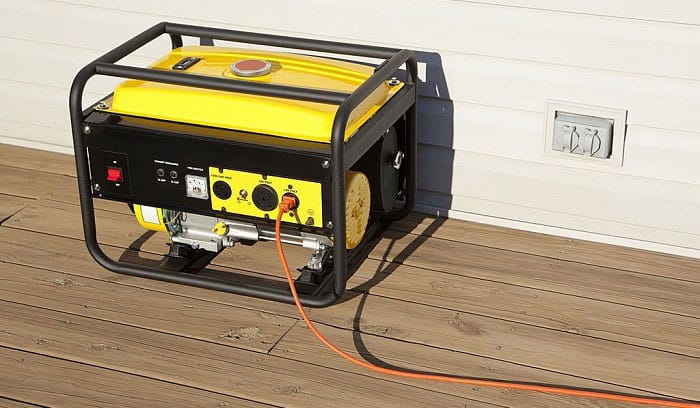Utilizing a generator during a power outage is excellent for keeping our lights and appliances running. We often connect it to our home electrical system for easy access and to save money for materials such as lengthy cords.
If you wonder “can you plug a generator into a wall socket?” the answer is: it’s possible. This setup is called back feeding or the flowing of current in the opposite direction. However, you should not make this electrical connection due to its significant electrical risks.
In this article, I will explain why you should not connect your generator directly to your home electrical outlet. Moreover, you will also learn other legal and safe ways to run this power backup in your home.
Table of Contents
Risks of Plugging a Generator Into a Wall Socket
Plugging generator into outlet in your home can pose significant risks to both people and property. For a better understanding, here are some risks inherent in this electrical connection.
1. Can Possibly Start Electrical Fires
A portable generator may generate a substantial amount of current. The first thing to be damaged by the high current is the wire used in the outlet to which you plug your generator. As a result, this damaged wire can cause electrocution or start a fire.
At the same time, since no circuit breaker regulates the current from the generator, backfeeding through a wall outlet exposes your electronics to possible harm. Also, anyone connected to the utility transformer in your neighborhood may experience backfeeding and have to deal with ruined appliances.
2. The Generator Can Get Damaged.
The generator itself is also not safe. It can blow up or incur damage when electricity goes back to normal. This could happen, since most of us forget to turn off the main breaker when an electrical outage occurs.
3. Power Line Workers Can Get Electrocuted.
When you plug generator into house outlet, it creates a severe hazard that can electrocute power line workers if they are on the job. This is because the electricity from the generator can flow to the power grid at an unusually high voltage.
Note: It is crucial to remember that plugging a generator into dryer outlet or any outlet in your home is against the NEC standards and prohibited by law. Therefore, if this illegal connection causes any damage, your home insurance company may not provide coverage for the accident.
Ways to Plug a Generator Into House Properly
One of the simplest ways to back feed an electrical supply into your home’s electrical system is to plug generator into wall outlet using a tool known as a “suicide cord” or a cord with two male ends.
However, due to the live terminal connection of the prongs, using a suicide cord can be extremely dangerous. You can experience electrical shock if you touch the prongs on one end while the other end is connected to the generator.
Additionally, as stated above, this method of connecting is not allowed since it is prohibited by law.
If you are looking for efficient and safe ways to install a temporary generator connection, here are the methods that might be good to consider.
1. Interlock Kit
This method requires a power inlet box outside the house where you can connect your generator. This power inlet box is also linked to a branch circuit breaker installed next to the main breaker. It also uses an interlock kit, ensuring that both power sources cannot be on simultaneously.
2. Transfer Switch
A manual transfer switch is a device that allows you to safely and efficiently switch your home’s electrical system between utility power and generator power. It is typically installed next to your home’s circuit breaker panel and is wired directly into your house’s electrical system.
When you experience a power outage, you can use the manual transfer switch to change your home’s electricity from utility to generator. This allows you to power essential appliances and devices in your house until power is restored.
This method is just like a generator plugged into the electrical box, including a series of breakers. It allows you to select which circuits you want to power with the generator and ensures that you only run the essential circuits in your home and avoid overloading your generator.
You may also have an automatic transfer switch, which will send a signal to the generator when utility power goes off and change the electrical source to the generator automatically.
3. Dedicated Generator Outlet
This method necessitates the installation of a power panel within your home that is linked to a power inlet box outdoors for the generator connection.
You are just extending the generator power outlet outside your home to connect your devices. This approach is also safe, since it has separate electrical wiring from your home’s electrical system and frees you from using a long and messy extension cord.
Read more: How to Safely Run Extension Cords From Generator Into House.
Frequently Asked Questions
Do You Need a Special Plug for the Generator?
In most cases, you need a standard outlet and plug (3-prong or 4-prong) when connecting to a 30 amp or less generator unit. However, if your generator power rating is 50 amps or higher, you might need to use a special plug.
In this case, checking the user’s manual will give you an idea of what generator plugs and sockets you need.
Can You Backfeed a Generator Through 110V Outlet?
Technically, yes. However, connecting your u-plug generator or any type of generator through a standard wall outlet is not allowed and is against electrical standards.
Instead of using a standard outlet to run your generator, you can choose a better option from the list above for a safe and dependable electrical connection.
Where Do You Plug a Generator Into Your House?
When connecting a generator to your house, using a power inlet box with a cover is highly recommended. This tool helps keep the electrical connection secure and free from electrical hazards.
Conclusion
In conclusion, answering the question “Can you plug a generator into a wall socket?” will give you understanding that this electrical connection brings many risks. If you want to safely run generators, it is best to consider choosing one of the options above.
Following local codes and regulations is important, even when using a portable power source as your main electrical supply. This is crucial for safety and to avoid a penalty caused by violating the law. Therefore, seeking professional assistance before making any changes to your home electrical system is always advisable.

I am Edwin Jones, in charge of designing content for Galvinpower. I aspire to use my experiences in marketing to create reliable and necessary information to help our readers. It has been fun to work with Andrew and apply his incredible knowledge to our content.



